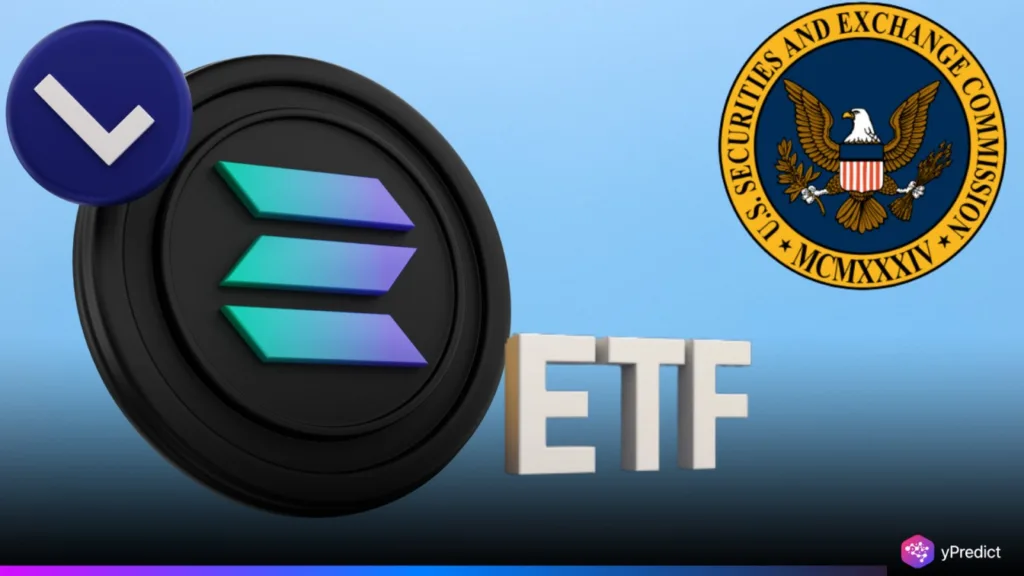
The U.S. Securities and Exchange Commission (SEC) has formally acknowledged the Invesco Galaxy filing for a Spot Solana ETF, a move that could signal a significant change in regulatory stance toward alternative blockchain models. This acknowledgment highlights growing institutional interest in Solana’s proof-of-stake network, which, according to Cyber Capital’s 2025 analysis, boasts an estimated $24.1 billion in annual economic security. In contrast, Bitcoin’s proof-of-work security stands at $9.7 billion, underscoring the competitive strength of newer consensus mechanisms.
SEC Opens Door to Diverse Blockchain Mechanisms
The filing suggests the SEC may be warming to blockchain models beyond Bitcoin’s traditional proof-of-work system. Solana’s proof-of-stake design offers higher scalability and energy efficiency, which could appeal to both institutional investors and environmentally conscious funds. The Invesco Galaxy proposal also points to potential returns from staking provisions, a feature not available in Bitcoin ETFs.
In June 2025, the SEC requested amended S-1 forms from all Spot Solana ETF issuers, indicating that regulatory review is advancing. An approval window may open by October 2025 as the consideration for the sixth-largest cryptocurrency by market cap represents a key step. Furthermore, with Coinbase Custody being used as a trusted storage option, this enhances the investment rationale, as institutions can ensure security upfront.
Institutional Interest Gains Momentum
Historically, the SEC has approached Solana-related ETFs with caution, delaying Grayscale’s proposal earlier in 2025. However, the growing number of filings, now standing at nine separate Spot Solana ETF proposals, shows a shift in market momentum. This surge reflects not just speculative interest but also a recognition of Solana’s security-to-market-cap ratio, which stands at 23%. By comparison, Bitcoin’s ratio is just 0.4%, according to recent blockchain security debates.
For asset managers like Invesco Galaxy, the opportunity lies in offering diversified exposure to high-performance blockchains. The firm’s strategy to integrate staking rewards into its ETF structure could potentially enhance investor returns, setting it apart from other crypto-based exchange-traded products.
Potential Market Impact by October 2025
If approved within the expected timeframe, the Spot Solana ETF could reshape investor access to Solana. The product’s structure—backed by Coinbase Custody and powered by proof-of-stake economics would enable both retail and institutional investors to gain regulated exposure to Solana without directly holding the asset.
The ETF’s staking component could offer yield opportunities, a feature absent in traditional crypto ETFs. They think that could generate higher adoption rates, most certainly among income funds that are looking to get their first exposure to digital assets. Clearing the way with the SEC could also pave the way for more proof-of-stake-based ETFs and other investments by reducing the risk profile and further diversifying the crypto ETF and investment world.
A Turning Point for Crypto Regulation
The SEC’s acknowledgment of Invesco Galaxy’s filing may represent more than just another ETF review; it could be a step toward embracing a broader range of blockchain technologies. While approval is not guaranteed, the move signals a willingness to consider alternative consensus models in regulated investment products.
Industry watchers will closely monitor developments over the coming months. The Spot Solana ETF’s high economic security, favorable institutional conditions, and major integration with Coinbase Custody make it a potential game-changer in the world of crypto investment products. If the approval is granted in October, Solana stands to change its legitimacy and drive capital into the space as it rebalances the competitive landscape between proof-of-stake and proof-of-work assets.






